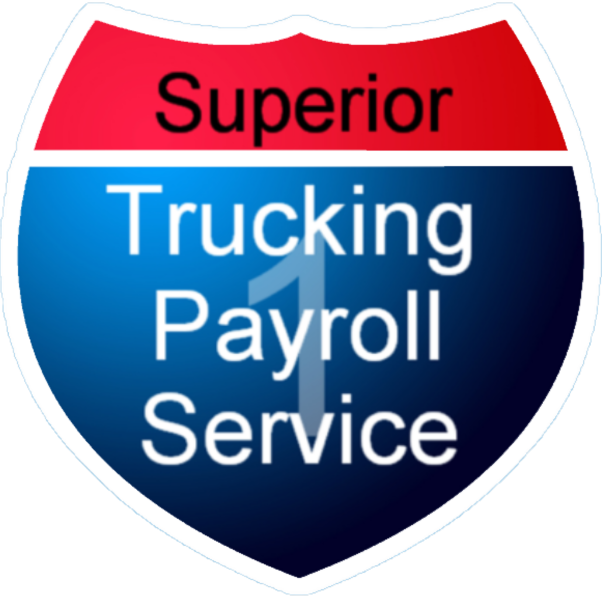Are you struggling to keep up with your growing business? Do you need to hire your first truck driver but worry about finding the right person? What if you hire someone who doesn’t fit or makes things harder for you?
Hiring your first truck driver is a big step, but it doesn’t have to be stressful. With the right plan, you can find someone who helps you grow your business, stay on top of rules, and keep your customers happy.
In this guide, we’ll show you ten simple steps to hire your first driver. You’ll learn how to figure out what you need, find good candidates, and train your new driver the right way.
Step 1: Define What Your Company Needs From Your First Truck Driver
Before you start looking for a driver, figure out what you need.
Ask yourself:
- What type of freight will they haul?
- What routes or schedules will they run?
- Do they need special skills or endorsements, like HAZMAT or tanker certification?
A clear job description will help you attract the right candidates.
Step 2: Write a Job Posting That Attracts the Right First Driver
Your job posting is your first chance to grab a driver’s attention. Make it clear, honest, and appealing. Include:
- Job duties, pay range, and benefits
- Work schedules (e.g., local routes vs. long-haul)
- Equipment Description (make & model of truck and trailer used)
- Are there any perks, like bonuses, steady miles, or newer trucks?
Post your job ad where drivers look, such as:
- Trucking job boards like TruckersReport or CDLjobs.com
- Social media platforms, especially Facebook trucking groups
- Your own website
Step 3: How to Screen Applications to Find Your Best First Driver
Finding the right driver starts with careful screening. Don’t rush to fill the position! Remember you want to hire someone who will represent your company well and fit into your team.
When reviewing applications, focus on two key areas:
- Qualifications: Look for a valid CDL, clean driving record, and relevant experience
- Character: Does this person align with your company’s values and work ethic?
Consider what kind of person you want to represent your business. A driver who respects safety, communicates well, and shares your mission will be a better long-term fit than someone who just “fills the seat.”
Step 4: Interviewing Tips to Choose the Best First Driver for Your Business
The interview is your chance to dig deeper. It’s not just about verifying skills—it’s about understanding if this person is the right fit for you and your company.
During the interview:
- Ask about their experience with similar routes or equipment.
- Find out how they handle challenges like delays, bad weather, or demanding schedules.
- Discuss their long-term goals. Are they looking for a steady role that aligns with your company’s growth?
Pay attention to communication skills, attitude, and professionalism. A great driver doesn’t just get the job done—they strengthen your company’s reputation and work as part of your team.
Step 5: Know your Legal Requirements Before Hiring Your First Driver
The trucking industry has strict regulations, and it’s your job to follow them. Make sure your driver has:
- A valid CDL and any necessary endorsements
- Medical certification proving they’re fit to drive.
- Compliance with FMCSA (Federal Motor Carrier Safety Administration) requirements.
This step protects your company from fines and ensures safety on the road.
Step 6: Test Driving Skills to Ensure Your First Driver Is Skilled and Capable
Don’t stop at checking a driver’s CDL—go one step further and test their skills. A road test or practical evaluation will show how they handle real-world driving scenarios, your equipment, and safety protocols.
Why is this important?
- Protect Your Business: You need a driver who’s skilled and reliable to avoid accidents, delays, or damaged freight.
- Protect Your Customers: Your reputation depends on delivering loads on time and in good condition. A skilled driver keeps your promises to your customers, helping you build trust and maintain strong relationships.

Also, take time to review their driving history. Check for:
- Traffic violations or accidents.
- Any history of Hours of Service rule violations.
- Patterns that could suggest unsafe or careless habits.
By assessing driving skills carefully, you ensure your customers stay happy, and your business stays on the road to success.
Step 7: Onboard and Train Your First Truck Driver for Success
Once you’ve hired your driver, give them a strong start with proper onboarding and training. This helps them succeed and ensures they understand your company’s expectations.
During onboarding:
- Train on safety procedures, company policies, and job responsibilities.
- Emphasize a safety-first mindset and provide guidance on handling equipment and freight.
- Set clear expectations for communication, schedules, and customer service.
Also, don’t forget the paperwork!
-
Create an Employee File
Include tax forms (W-4), employment agreements, and other HR documents. These documents need to include a copy of the driver’s license, Social Security Card, and an I-9 form. -
Build a Driver Qualification (DQ) File
This is required by the FMCSA and must include:
- A copy of their CDL
- Medical exam certification
- Road test results
- Annual motor vehicle record (MVR)
- Any endorsements or certifications
Important: All paperwork must be completed and properly filed before the driver starts working for your company. This keeps you compliant with FMCSA regulations and protects your business in case of an audit or legal issue.
Maintaining these files shows professionalism and ensures you’re ready for future growth. A well-documented process helps set your new driver up for success and keeps your company on track.
Step 8: Offer Competitive Pay and Benefits to Keep Your First Driver Happy
Drivers want to feel valued, and pay is a big part of that. Research industry standards to make sure your compensation package is competitive and appealing.
When creating your offer, consider including the following:
- Base Pay: Fair and consistent pay, whether it’s hourly, per mile, or salary
- Bonuses: Performance-based bonuses for on-time deliveries, safety records, or fuel efficiency.
- Per Diem: Daily allowances to cover meals and other expenses when drivers are on the road. This can be a great benefit and may provide tax advantages for both you and the driver.
- Benefits: Options like health insurance, retirement plans, or paid time off.
- Work-Life Balance: Flexible schedules, guaranteed home time, or consistent miles.
Offering a competitive pay package not only attracts quality drivers but also keeps them around. When drivers feel valued and supported, they’re more likely to stay loyal to your company.
Step 9: Stay Connected With Your First Driver Through Open Communication
Stay in touch with your new driver. Regular check-ins can uncover small problems before they become big issues. Ask for their feedback on:
- Equipment and routes.
- Workload and schedules.
- Suggestions for improving operations.
Showing you care about their opinions can boost morale and retention.
Step 10: Monitor Performance and Give Feedback to Your First Driver
Hiring a driver is just the beginning—keeping them on track and helping them succeed is key to growing your business. Regularly monitor performance to ensure they’re meeting expectations and representing your company well.
Focus on tracking:
- On-Time Deliveries: Meeting deadlines keeps your customers happy and builds trust.
- Safety Records: Monitor for accidents, traffic violations, or Hours of Service compliance
- Fuel Efficiency: A driver’s habits can directly impact your bottom line.

When you spot areas for improvement, provide constructive feedback in a respectful way. A simple, honest conversation can help a driver correct mistakes and feel supported. Don’t just point out problems—offer guidance and solutions to help them improve.
At the same time, remember to recognize good work. Drivers who consistently perform well deserve praise, and even small gestures of appreciation can go a long way. A “thank you” or recognizing their achievements shows that you value their effort.
By monitoring performance, offering feedback, and showing support, you create a positive environment where drivers can thrive. A motivated, reliable driver doesn’t just move freight—they help your business succeed for years to come.
Start Strong, Grow Stronger With the Right Partner
Hiring your first truck driver is a big step, but it doesn’t have to be overwhelming. By following these ten steps, you can find the right person, stay compliant, and grow your business with confidence.
The wrong hire can cost you time, money, and your reputation, so it’s important to get it right. With a clear plan, you’ll be able to focus on growing your company while your new driver helps you keep things running smoothly.
At Superior Trucking Payroll Service, we know how tough it can be for small trucking companies to get the support they need. Big-box providers often ignore businesses with just one employee—but we won’t. We specialize in helping owner-operators like you during this important growth stage.
Want to see how we can help your business thrive? Read our article, “Why Trucking Companies Like Us,” to learn how we make payroll simple and stress-free for small trucking companies like yours.
With over 15 years of experience in the trucking industry, Melisa is well-versed in the complexities of trucking payroll and adept at navigating special circumstances. Before joining Superior Trucking Payroll Service, Melisa worked at a trucking company, where she managed driver miles and expenses for a fleet of 50 trucks. This hands-on experience gives her unique insight into the challenges our clients face when preparing their payroll data.
Melisa’s top priority is customer service. She strives to treat each client as an individual with genuine needs, rather than just another number in the system. Her goal is to alleviate the burdens of our clients and make their daily operations smoother.

